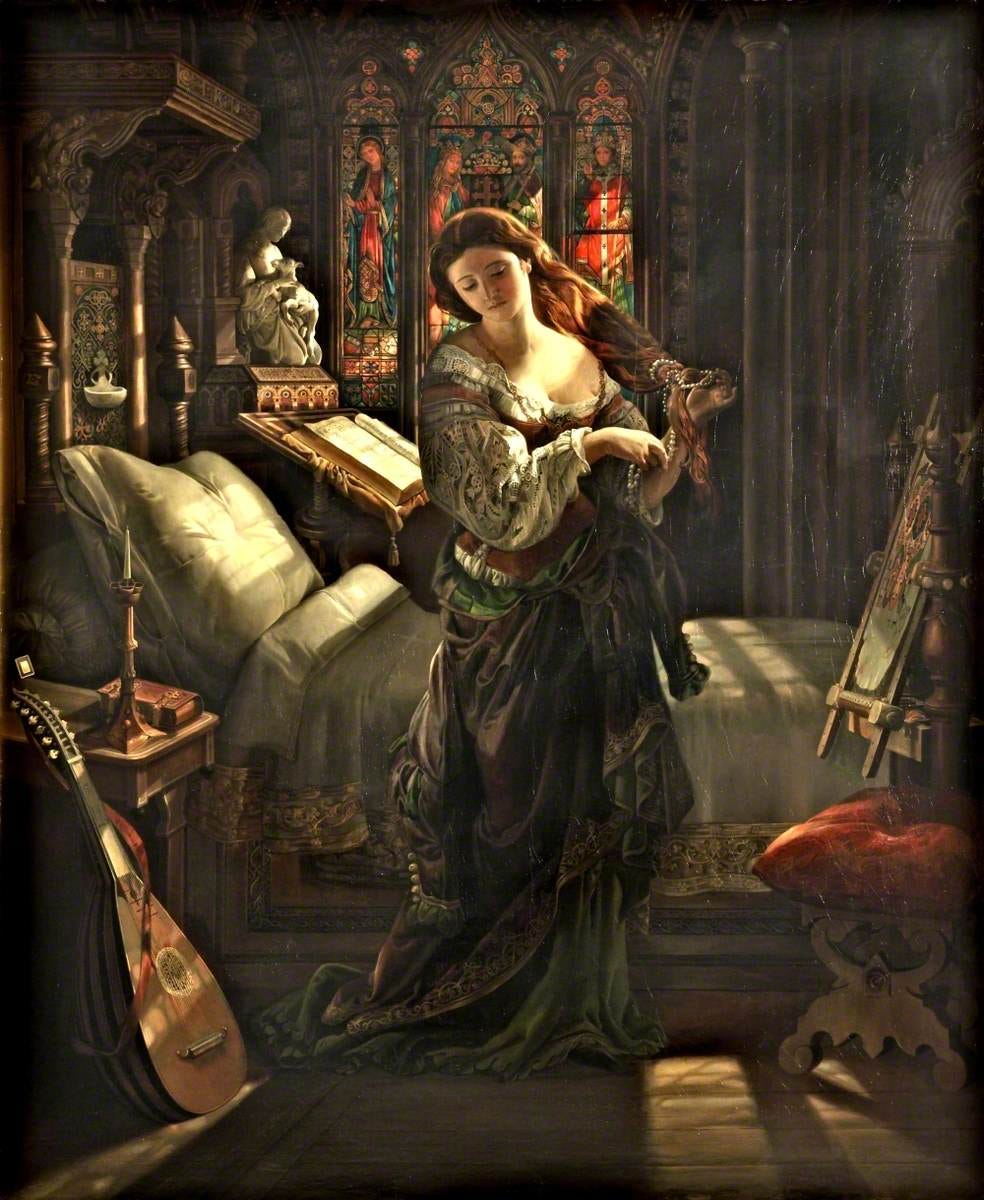Keats’ Theory of Gothic Romance
Dreams, Desires, and Eroticism in John Keats' "Eve of St. Agnes" poem
“I know you, I walked with you Once Upon a Dream”
- Disney’s “Sleeping Beauty”
Dreams and desires are intimately linked, as dreams are where desires are revealed when they are too dangerous to express under the watchful guard of consciousness and rationality. The Gothic Novel was an extremely popular form of literature at the end of the eighteenth century and featured a quasi-medieval setting, a clandestine love affair haunted by villains and ghosts. This world of the Gothic Romance is what forms the architecture of Keats’ poem, “The Eve of St Agnes” which was published in 1816. Like an abandoned and crumbling castle, however, the breath of life that flies through the vaulted stone ceilings and encircles the cold stone gargoyles of this dormant setting, is Keats’ poetry which harnesses the throbbing fire of Eroticism and the longing melancholy of Romance.
Gothic Nostalgia
The Eve of St. Agnes is an iconic poem because it captures and illustrates so many of the images and themes of the Gothic Story, which is a nostalgia for Europe when it was more serious in its religious convictions, in its mythologies, and its passions. At the end of the eighteenth century, the looming of the industrial revolution caused a “de-romanticization” of European culture, a culling of adventure and de-magicking of its religion. It is little wonder that the artists of the time longed for an, albeit imagined, more magical quasi-medieval past. In the poem, even Madeline is “asleep in the lap of legends old” and the magic of the poem is part of “those enchantments old” (134-135). Tales of chivalry and medieval knights and heroes were extremely popular during this time. Keats, being a poet, was sensitive to this collective nostalgia and when he wrote this poem, it was a love song longing for a time of heroes and damsels who needed saving.



